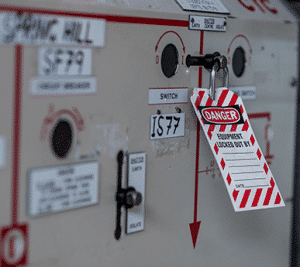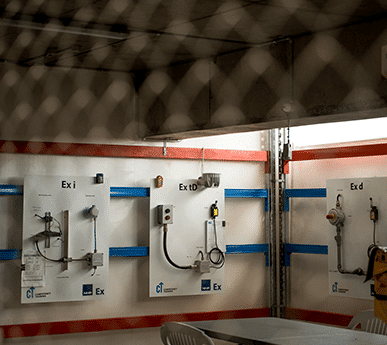Roar Solutions for Beginners
Roar Solutions for Beginners
Blog Article
How Roar Solutions can Save You Time, Stress, and Money.
Table of ContentsThe Greatest Guide To Roar SolutionsTop Guidelines Of Roar Solutions4 Easy Facts About Roar Solutions Explained
In such an atmosphere a fire or surge is possible when three fundamental conditions are met. This is commonly referred to as the "dangerous area" or "burning" triangle. In order to protect setups from a prospective explosion a method of analysing and classifying a potentially dangerous area is required. The objective of this is to guarantee the correct option and setup of devices to inevitably stop a surge and to ensure safety and security of life.
(https://www.edocr.com/v/kr2y9bbk/thomascarrillo4740/roar-solutions)
No devices should be installed where the surface temperature level of the devices is better than the ignition temperature of the given hazard. Below are some common dirt harmful and their minimal ignition temperature. Coal Dirt 380C 225C Polythene 420C (thaws) Methyl Cellulose 420C 320C Starch 460C 435C Flour 490C 340C Sugar 490C 460C Grain Dirt 510C 300C Phenolic Resin 530C > 450C Aluminium 590C > 450C PVC 700C > 450C Residue 810C 570C The possibility of the risk being existing in a concentration high adequate to cause an ignition will certainly differ from location to location.
In order to classify this risk a setup is separated right into locations of danger relying on the amount of time the harmful is existing. These areas are described as Zones. For gases and vapours and dusts and fibres there are 3 areas. Area 0 Zone 20 A harmful ambience is highly most likely to be present and might be present for extended periods of time (> 1000 hours annually) or also constantly Area 1 Zone 21 A harmful ambience is possible however unlikely to be present for long periods of time (> 10 450 C [842 F] A category of T6 implies the minimal ignition temperature is > 85 C [185 F] Dangerous area electrical devices perhaps developed for usage in greater ambient temperatures. This would certainly suggested on the rating plate e.g. EExe II C T3 Ta + 60C( This implies at 60C ambient T3 will not be exceeded) T1 T1, T2, T3, T4, T5, T6 T2 T2, T3, T4, T5, T6 T3 T3, T4, T5, T6 T4 T4, T5, T6 T5 T5, T6 T6 T6 A T Course score of T1 suggests the maximum surface temperature level generated by the instrument at 40 C is 450 C. Presuming the linked T Course and Temperature level rating for the equipment are suitable for the area, you can constantly use a tool with a more stringent Department score than required for the location. There isn't a clear solution to this inquiry sadly. It truly does rely on the sort of equipment and what repairs require to be performed. Tools with particular test treatments that can not be performed in the area in order to achieve/maintain 3rd party ranking. Should return to the manufacturing facility if it is prior to the devices's solution. Field Repair Work By Authorised Worker: Challenging screening might not be called for however specific procedures may need to be followed in order for the tools to keep its third celebration score. Authorized personnel have to be utilized to carry out the work appropriately Repair should be a like for like replacement. New component need to be taken into consideration as a direct substitute requiring no special testing of the equipment after the repair is full. Each item of equipment with a dangerous rating must be reviewed individually. These are detailed at a high level below, however, for even more in-depth information, please refer directly to the guidelines.
Some Known Details About Roar Solutions
The equipment register is a detailed database of equipment records that includes a minimum set of areas to recognize each item's area, technical criteria, Ex-spouse classification, age, and environmental information. This information is critical for monitoring and taking care of the devices properly within dangerous locations. On the other hand, for regular or RBI tasting inspections, the grade will certainly be a mix of Thorough and Close assessments. The ratio of Comprehensive to Shut examinations will certainly be identified by the Equipment Risk, which is assessed based upon ignition threat (the chance of a resource of ignition versus the probability of a combustible environment )and the harmful area classification
( Zone 0, 1, or 2). This variation will additionally influence the resourcing requirements for job prep work. Once Whole lots are defined, you can develop tasting strategies based on the sample size of each Lot, which refers to the variety of arbitrary equipment products to be evaluated. To determine the needed sample size, two facets need to be evaluated: the dimension of the Lot and the group of evaluation, which suggests the level of effort that should be used( decreased, regular, or raised )to the examination of useful content the Whole lot. By incorporating the group of evaluation with the Lot size, you can after that develop the suitable denial criteria for a sample, indicating the permitted number of defective items found within that example. For even more details on this procedure, please describe the Power Institute Standards. The IEC 60079 standard suggests that the optimum period in between inspections must not exceed 3 years. EEHA examinations will additionally be performed outside of RBI campaigns as part of arranged upkeep and devices overhauls or repair services. These inspections can be credited towards the RBI sample dimensions within the affected Lots. EEHA evaluations are conducted to identify mistakes in electrical devices. A weighted racking up system is necessary, as a single item of equipment might have multiple faults, each with differing levels of ignition risk. If the mixed rating of both assessments is less than two times the mistake score, the Lot is regarded acceptable. If the Great deal is still thought about unacceptable, it should undertake a full inspection or reason, which may cause stricter evaluation procedures. Accepted Whole lot: The causes of any kind of faults are identified. If an usual failure mode is found, added equipment might require maintenance. Mistakes are classified by extent( Safety and security, Honesty, Home cleaning ), making sure that urgent problems are assessed and attended to without delay to mitigate any type of influence on safety and security or operations. The EEHA data source should track and tape-record the lifecycle of faults in addition to the corrective actions taken. Carrying out a durable Risk-Based Inspection( RBI )strategy is crucial for guaranteeing compliance and safety in managing Electric Devices in Hazardous Locations( EEHA) (hazardous area course). Automated Fault Rating and Lifecycle Monitoring: Easily manage mistakes and track their lifecycle to improve examination precision. The intro of this assistance for risk-based examination additionally strengthens Inspectivity's position as a best-in-class solution for regulative compliance, as well as for any asset-centric inspection usage case. If you are interested in learning much more, we invite you to request a demonstration and find just how our option can transform your EEHA management processes.
How Roar Solutions can Save You Time, Stress, and Money.

In regards to eruptive risk, a harmful area is an environment in which an eruptive atmosphere is existing (or may be anticipated to be present) in quantities that require unique safety measures for the building, installment and use tools. eeha. In this article we check out the obstacles encountered in the work environment, the threat control actions, and the required competencies to function safely
These substances can, in specific conditions, develop eruptive ambiences and these can have major and terrible repercussions. Most of us are familiar with the fire triangle get rid of any one of the 3 aspects and the fire can not take place, but what does this mean in the context of dangerous areas?
In the majority of circumstances, we can do little about the levels of oxygen airborne, but we can have substantial influence on sources of ignition, as an example electrical equipment. Harmful areas are documented on the unsafe area classification drawing and are recognized on-site by the triangular "EX LOVER" indicator. Right here, among other vital details, areas are split into three kinds depending on the danger, the likelihood and duration that an explosive environment will certainly exist; Area 0 or 20 is considered the most hazardous and Zone 2 or 22 is deemed the least.
Report this page